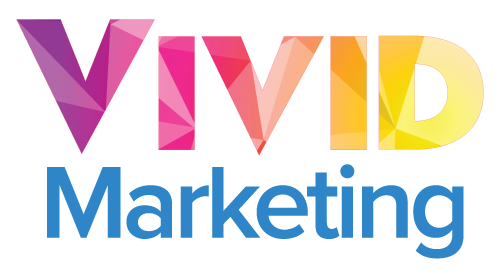

Consulting is a unique field. No matter what your speciality, the true measure of success is your ability to help clients solve difficult problems. You possess an exceptional ability to think, create and communicate; a talent that is highly sought-after by executives. The pitfall of your profession is if your consulting business has no clients, then you have no consulting business.
Traditionally the best way of marketing your consulting services was recommendations, referrals and word of mouth. However, if you’re in the early years of your consulting career or a dry spell, the chances are this isn’t happening as often as you’d like. More likely, you’re struggling with:
- Not having enough clients
- Attracting the wrong kind of clients
- Trying to convert leads that are expensive and time-consuming
You’re probably also having to market yourself to prospects that may not even be aware that they need your services, which significantly lengthens the sales cycle.
Many consultants still heavily rely on referrals, but this is dependent on the size and quality of your network, is labour intensive and inconsistent. Combine this with the ease that buyers can search online and locate hundreds of qualified consultants in the same state – you’re facing tough competition to stand out.
So, what type of marketing can generate the highest quality consulting leads and opportunities?
This is the conventional advice given:
- Public speaking at events, such as conferences, trade shows and meetups – How many events in your niche are there per year? And how do you tackle falling attendance?
- Outbound sales calls – Cold calling is a very tough vs. warm calling, but that’s exactly what you’ll be stuck doing unless you can generate warm leads to follow up.
- Writing a book – Is an excellent prospecting tool, but it takes a long time to write 90,000 words, publish, print, promote and is costly.
These above definitely have their merit and place, but I want to explore how adding digital elements can have an enormous impact on the quantity and quality of leads generated, and amplify your exposure and branding.
What Makes You Unique?
Before we start on lead generation strategies, let’s review your personal branding. This goes beyond what you say about yourself, your experience and your services. Even if you think you’ve already nailed this, it’s worth reviewing with a fresh perspective. Consultants sometimes struggle to explain their uniqueness and how their expertise can benefit a business, so they default to talking about themselves, copy what others say, or worse, use complicated language stuffed with buzz words.
Basic personal branding showcases your beliefs, strengths and experience, but these alone won’t earn you a seat at the executive table. It’s time to take your exceptional thinking ability and turn it on yourself.
The following questions will help you uncover what makes you unique and how you can stand out amongst the sea of consultants. I’ve borrowed and adapted these questions from Dorie Clark’s book, “How to Find Your Break-Through Idea”. Dorie Clark is described as the thought-leader on how to become a thought-leader.
- What do others in your field overlook?
- What’s the conventional wisdom about how to do things “the right way” in your field?
- What are three trends shaping your industry? Are they short-term or fundamental? How would you describe them to an outsider unfamiliar with your field?
- What should smart companies or individuals do to thrive in the future? How should they prepare? What steps should they take?
- What innovations or new developments do you know about that most others do not?
- What experiences have you had that others in your field most likely have not? How does that difference shape your view of the industry?
- What topics are you a “local expert” in – that is, not necessarily the best in the world, but better or more knowledgeable than those around you?
- Is there a way you can differentiate yourself from others in your profession?
- What is the traditional background of influential players in your field? Is there a way to leverage being the opposite of that?
- How can you leverage experience to bring a new perspective to your current endeavour?
- Are there parts of your background or resume that you consider “irrelevant” or out of place? How can you integrate them back into your professional life in a new way?
- Has the overall nature of your field been articulated? Is there an aspect of your field that hasn’t been adequately defined?
- What are the principles behind the best practices you champion? Can you explain the underlying premise of your philosophy?
- What are the simple things that are stumbling blocks for other consultants in your field? What’s holding back their progress?
- What do most people misunderstand about your field? What errors do they make, and can you help redirect them?
- What are the strongest brand affiliations you possess? Have you worked with a prominent company, written for a major publication, attended a prestigious school, won a major award, built relationships with prominent leaders, etc.?
Next is to communicate your value across different channels. The channels that you ultimately choose to pursue should be the ones that can best reach your ideal client, which may take some investigation and testing to figure out.
Make an Impact with Your Website and Thought-Leader Content
Your own website is a must. It’s an extension of your business card, giving you complete control over positioning, messaging and visual elements. It’s also your stage to interact with potential prospects. Blogging is very popular, and for a good reason. It’s the perfect way to share insights, stories, case studies and various pieces of educational content mirroring the issues faced by your prospects. Regular blogging around your speciality area resonates with readers and demonstrates your knowledge and experience. Rather than telling people they need your services, you’re sharing insightful, thought-provoking information that makes readers decide for themselves that they need your services. You may have heard this being referred to as ‘pull’ vs. ‘push’ marketing.
In theory, it sounds easy, but many people have blogs and repeating the same information or thoughts won’t entice prospects. You really need a strategy of who you want to read your content and what specific topics will get their attention. Use your exceptional think ability to act like a journalist – research, question, interview, prod and poke.
It all begins with: what should you write about? Start by making a list of possible topics and match them with your target reader. Think about the most common questions people have about your field, misconceptions, emerging trends that will have an impact, or interesting shortcuts or ways to “hack the system or a process.” What strategies have enabled you to achieve success with other clients? If nothing changes, what implications will it have for the industry/field? You can also search LinkedIn communities and Quora to see what questions are being asked or topics that are being discussed.
Your goal is to genuinely help people in some aspect of their business through your writing. Instead of creating content on a daily or weekly basis, slow down. Spend at least 40 hours on every piece of content and make it exceptional. Make it 10X better than the next best piece of content on the topic; this will yield a significantly higher quantity and quality of leads.
Turbocharge Your Online Presence
To position yourself as a thought-leader, you’ll need to build your online presence beyond your website too. The simplest way to do this is to be published with thought-leader pieces in other people’s blogs and news articles in the press. As a start, check out these websites:
- Quora is a place to gain and share knowledge. It’s a platform to ask questions and connect with people who contribute unique insights and quality answers.
- HARO provides journalists with a robust database of sources for upcoming stories and daily opportunities for sources to secure valuable media coverage.
- SourceBottle is a free online service that connects journalists with sources.
Also contribute your thoughts using the comment section at the end of articles, blogs and discussions.
Amplify Your Expertise with Social Media
Nearly every consultant has a great LinkedIn profile – professional photo, exceptional summary and recommendations from clients. If your profile is missing these, you need to address them right away.
What will get you noticed is actively participating – liking and sharing other people’s content, commenting and replying to others’ comments. Building these online relationships will help you gain support for your own content posting. LinkedIn is a two-way communication community, if you only use it to push content out, you may not get any interaction (even if the content is great). I’ve seen this happen to consultants that have 500+ connections; they’re essentially strangers just scrolling past. If people comment on your content, thank them for taking the time to engage as this encourages others to interact. If you’re taking the time to build relationships but still lack the interaction, you may need to re-evaluate the quality of your content.
I’m a big fan of LinkedIn and follow a few sales consultants that regularly post articles about sales – an industry that’s evolving slowly – and these articles challenge every angle of seemingly-outdated techniques that sales managers keep pumping out. There is no right answer, but it spurs great debate amongst sales professionals and C-level executives.
Make it Easy for References to Remember You
It’s important to stay in touch with your referral network, but take it beyond “how’s the family” and make it easy for them to refer you by sharing relevant content that they’ll find useful and could potentially pass on. Knowing that you are the thought leader on a topic will help keep you in mind and give them the confidence to refer you in this area.
Hyper-Targeted Paid Ads
Targeted paid ads can either do really well for you, or you’ll spend hundreds of dollars with no result. I would focus on doing a few of the other suggestions really well before attempting paid ads. Concentrate on building your brand and exceptional content to be ready for a great first impression with ad traffic. Nothing hurts a bad brand, product or service faster than advertising. When you are ready to go down this path, LinkedIn and Facebook targeting allow you to get very specific about who to serve your content to, which is amazing for finding the exact prospects you want to attract. Targeting + the right content for these people will reward you with good leads.
If Writing Isn’t Your Talent, Try Video
I talk a lot about writing, but the reality is many people struggle to write 2,000+ words. If you can effectively bullet point or summarise what you want to write, then it’s easy for a copywriter to write the entire article for you. The secret is ensuring your expertise comes across in the article, which requires your involvement. If writing still doesn’t appeal to you, try video! It doesn’t need to be a theatrical production, just ensure you have decent lighting and good sound.
Bonus Pro Tip: Dazzle with Webinars
I’m going to borrow a quote I read in an article, “our BS radars have become so good that you must show, not tell, that you’re the authority”. A scalable way of doing this is by running an online webinar.
- Your webinar will position you as the authority on your topic
- Hearing and seeing you will help prospects develop a rapport with you
- You’re not limited to a fixed number of people that can join the webinar, plus it’s low cost
Gracefully Stalk Your Prospects with Re-Targeting
The buyer journey is no longer a straight line. Imagine this typical scenario; a prospect pops over to your website then leaves. A month later, they discover your latest blog article, and then decide to download that eBook. The next month, they decide to check out another blog post. Maybe two weeks later they decide to get in touch. A great way to speed up this process is with re-targeting ads. Re-targeting ads bring back previous website visitors. It works by keeping track of people who visit your site and displaying your re-targeting ads to them as they visit other sites online or scroll through Facebook.
Automate the Lead Qualifying Process
So that you don’t waste time talking to people that you can’t help, you need to create a process that pre-educates, pre-sells and pre-qualifies so that you end up with leads that are ready to buy.
Step 1: Offer a Lead Magnet (such as a white paper, eBook, case study or report) in exchange for an email address and basic contact information. Create a landing page on your website with a form to capture the details before allowing the prospect to download your content. You can use advertising and social media to drive traffic to the landing page.
The lead magnet helps to attract and qualify potential clients and gives them something of value to begin the relationship. Now that we know they are interested in this topic, we can make additional offers which are likely to be of interest with less resistance. Begin with small offers (such as an eBook) and move up to larger offers (such as a webinar or a free strategy session).
Step 2: Implement simple automation, and you’ll have yourself a scalable lead generation process that can provide a steady source of new, qualified prospects on autopilot.
Example: Create a Series of Automated Emails
- Email 1 (day 1): A welcome message and the download link to the lead magnet.
- Email 2 (7 days later): A link to a related article you wrote on the same topic.
- Email 3 (3 days later): A case study on the same topic.
- Email 4 (4 days later): An invitation to join a webinar that you pre-recorded, such as an interview with another thought-leader on the same topic.
- Email 5 (2 days later): A checklist on the same topic.
- Email 6 (7 days later): An offer for a free 40 minute Skype strategy session.
With each email, you can view who opens and clicks to understand the level of engagement at each stage. If people drop-off at a point, change that email and see if the next result is better. It’s like a sales funnel, fill it up at the beginning and then optimise each stage to improve the conversion rate at the final email. If people still aren’t ready once they reach the end, they can be added to your regular newsletter or a future re-targeting campaign. And it continues to repeat itself.
Work smarter, not harder. Know your audience and create insightful content that addresses the problem areas. Do this consistently, and you’ll find your sweet spot.


